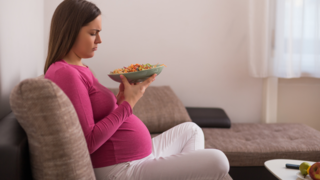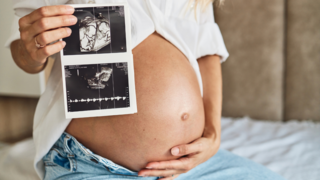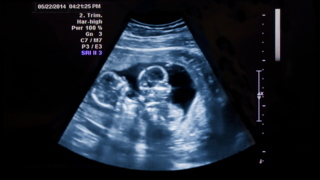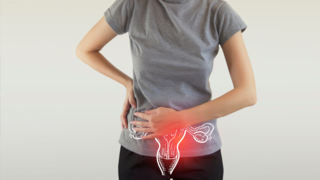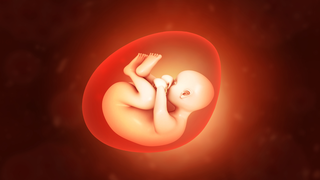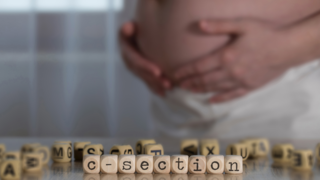In this article:
When Does the Baby Bump Start to Show?
The baby bump starts to show around 15 weeks for most people, which is early in the second trimester.However, several factors can influence when your bump becomes visible:
First Pregnancy vs. Subsequent Ones
If this is your first pregnancy, your bump might take a little longer to appear, often closer to 16 weeks. For second or subsequent pregnancies, your bump might show much sooner because your stomach muscles have stretched from your last pregnancy.Body Type and Weight
If you have a smaller waistline or lower body weight, you might notice your bump as early as 12 weeks. On the other hand, if you carry more weight, it could take closer to 16 weeks or longer for your bump to become noticeable.Carrying Multiples
Expecting twins or more? Your uterus needs to grow larger to accommodate multiple babies. So you might start showing as early as 6 weeks.Uterus Shape and Position
The way your uterus is positioned matters. A forward-tilting uterus can make your bump show up earlier. If it tilts backward, it might take longer to see a change.Diastasis Recti
This is when your abdominal muscles separate, creating a bulge that can mimic an early baby bump. It’s more common in later pregnancies but can happen in first ones too.Incorrect Due Date
If your bump seems to appear too soon, you might be a little further along than expected. It’s always good to check with your doctor just to be sure.Why Your Clothes Stop Fitting Around Week 15 of Pregnancy
You might have noticed your clothes starting to feel tighter, and that’s completely normal.Here’s why this happens and what might be going on:
- Bloating: You might feel bloated early in pregnancy, around 6 to 8 weeks. That’s because your hormones are shifting, and your body’s holding on to more fluid. It can make your belly feel fuller than it really is.
- Breast changes: Your breasts might also start to grow before your bump even shows. It’s common to go up a cup size or two, so your bras and tops may start to feel snug.
- Uterus expansion: By around 20 weeks, your uterus reaches the level of your navel, pushing your belly outward. Those favourite jeans or button-down shirts? They might not close anymore, and that’s okay. It’s just your body making space for your growing baby.
- Weight gain: Pregnancy naturally involves some weight gain to support your baby’s growth. You might feel it most around your belly, hips, and thighs, which can make your regular clothes feel tighter than usual.
- Skin sensitivity: Your skin can become more sensitive because of all the hormonal changes happening. Fabrics that once felt fine might suddenly feel itchy or uncomfortable. That’s usually your body’s way of telling you it’s time to switch to softer, stretchier clothes that let you breathe and move more freely.
When Should You Start Transitioning to Maternity Clothes?
When your regular clothes start feeling tight, it’s a clear sign it’s time to think about maternity wear. Most people start making the switch somewhere between 12 and 20 weeks, depending on how their body is changing and what feels comfortable.Here’s how to make the transition easy:
- Signs you’re ready: You might be ready if your shirts won’t button, your pants feel too snug after meals, or you’re reaching for stretchy clothes all the time.
- Start small: You don’t need a full new wardrobe. Begin with essentials like stretchy T-shirts, leggings, and maternity jeans with elastic waistbands. These pieces grow with your bump and keep you comfortable.
- Sizing tips: Maternity clothes are often sized similarly to your pre-pregnancy size (e.g., a pre-pregnancy size 6 might be a maternity size 6). However, your body’s proportions may change, so focus on what feels comfortable.
- Versatile pieces: Maxi dresses, empire-waisted tops, or flowy anarkalis are great for flattering your bump without feeling tight. One-piece outfits like dresses or jumpsuits can work for casual days, office wear, or even baby showers.
- Maternity underwear and bras: Seamless underwear and supportive bras make a big difference in comfort and can be used postpartum too.
Whether you’re pregnant, a new mom, or navigating postpartum, you don’t have to do it alone. Join our support group to connect, share, and support one another.
FAQs on Why Your Clothes Suddenly Don't Fit: The Baby Bump Appears
- What are the different types of baby bumps?
Baby bumps are often classified by their position, like “carrying high” or “carrying low.” Some people also have a “B belly,” where the bump shows a crease or dividing line across the abdomen. - Which fabrics are most comfortable for maternity clothes?
Breathable, natural fabrics like cotton, linen, and bamboo are ideal for maternity clothes.



